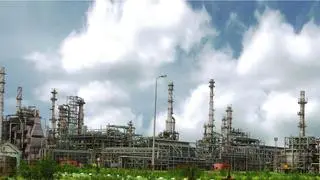The first thing Rajiv Bajaj noticed was that there was not a single battery manufacturer present at the NITI Aayog-called meeting last week with two-wheeler companies on the electric plan.
After all, this was about the electric mobility roadmap, and the Bajaj Auto Managing Director was surprised that a critical link to this vision statement was not present. Global battery makers would have better articulated the scale of plants needed so as to “significantly lower battery costs”.
Insisting that it was time for two-wheeler manufacturers to join the electric revolution, while citing China as a successful business model, NITI Aayog had reiterated its stance that the internal combustion engine (ICE) had to go.
“What revolution? What ban? Doubtless electric has great merit but keep in mind that the progressive ban by China on ICE vehicles made it possible for the Indian two- and three-wheeler industry to exploit large global markets,” Bajaj told BusinessLine .
There was really no urgency to completely recast the script with electric, especially when Indian two-wheelers had set the benchmark globally for emissions and mileage. “Why ban an industry which is world-class? If we are employing one million people and exporting over three million vehicles, what are we talking about?” asked Bajaj.
Venu Srinivasan, Chairman of TVS Motor Company, who was also present at the meeting, said Indian automakers were well aware of a national pollution issue that needed to be tackled on a war footing. Yet, it was not as if vehicles were the main polluters; power plants and refineries, industries like construction, and crop burning emitted much more.
“Given that most of our power is generated from coal, the pithead to wheel carbon emission will not improve with electric vehicles,” Srinivasan told BusinessLine . Further going from oil dependence to being dependent on imported lithium cobalt and other rare elements-based motors and batteries would not help the balance of payments situation. “In fact, we are replacing one problem with a bigger problem; going from the frying pan to the fire,” warned the TVS Motor Chairman.
Bajaj also made it clear that the industry was not anti-EVs by any stretch of imagination, but, by the same token, there was no reason for NITI Aayog to be anti-ICE either. While reiterating that he welcomed electric and the accompanying fiscal sops to make it happen, he cautioned that the present battery cost of $250/kWh would make it a pricey option for the end-user.
If e-bikes/scooters were to be affordable, battery costs would have to come down to $100/kWh levels. Additionally, if battery makers were assured of two million units annually from two-wheeler companies, there would be “enough volumes to justify investments.”
On the other hand, if the Centre were to subsidise e-vehicles to make them as affordable as the ICE range, this would work out to ₹1 lakh/vehicle; on an estimated 25 million two-wheelers in 2025, it would be a staggering ₹250,000 crore.
Transition to BS VI
Bajaj said the present work on transiting from BS IV to BS VI by April 2020 was an evolution in which the “degree of certainty is very high”. On the contrary, for the electric revolution, there was hardly any proof of concept given that it accounts for a minuscule part of the market right now.
“We are talking about taking it to 100 per cent when barely 0.01 per cent has been implemented so far,” said Bajaj.
Industry observers also warn that if the Centre still chooses to go ahead with its 2025 electric plan, the risk of the market being swamped with cheap Chinese products cannot be ruled out.
Will the Indian customer, used to far superior ICE models, buy these alternatives from China? According to Srinivasan, electric two-wheelers will not be an option either as they cost 80 per cent more than engine-based bikes. In all likelihood, said Bajaj, the buyer would “sit tight” on his BS IV bike/scooter while giving the cold shoulder to the BS VI option which would become irrelevant in an electric era.
Srinivasan said any “drastic shift” to electric would only increase India’s dependence on China “as we move away from West Asia, which is our major oil supplier”. The industry’s view is that lithium-ion batteries are the “only right option” compared with Chinese use of lead acid batteries.
“For now, we need more time to study this subject and plan a transition. We have to deeply study the carbon emissions equation, impact on investment and employment and foreign trade balance as our export competitiveness will be eroded,” said Srinivasan.








Comments
Comments have to be in English, and in full sentences. They cannot be abusive or personal. Please abide by our community guidelines for posting your comments.
We have migrated to a new commenting platform. If you are already a registered user of TheHindu Businessline and logged in, you may continue to engage with our articles. If you do not have an account please register and login to post comments. Users can access their older comments by logging into their accounts on Vuukle.